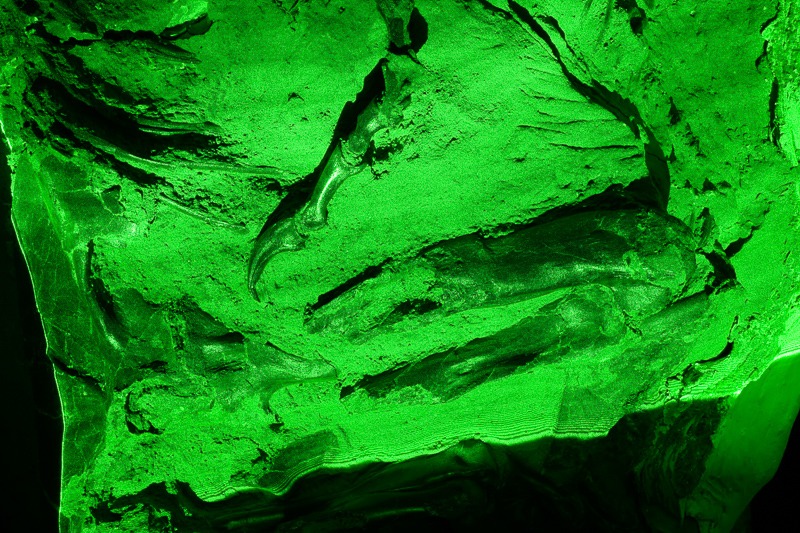Shining new light on old bones
For immediate release ‐ June 18, 2024
Paleontology
Contact: Jon Pishney, 919.244.7913. Images available upon request

The Dueling Dinosaurs are exceptionally preserved. Every bone remains in life position. This incredible preservation suggests that these two dinosaurs were entombed by sediment as fleshed-out carcasses and not just skeletons.
Through the process of fossilization, the bones of these animals were mineralized in exceptional condition, while the soft tissues (e.g., skin, muscle and feathers) mostly decomposed over time. Although the soft tissues were not preserved in pristine condition like the bones, these tissues can leave behind traces of their existence in and around a fossil through remnant organic molecules. These traces are often not visible under normal light sources (e.g., light bulbs) and can be inadvertently removed by conventional fossil preparation methods. However, these traces can be brought to illumination through a process called Laser Stimulated Fluorescence (LSF).
LSF utilizes high-flux, visible laser light to stimulate (excite) the remnant organic traces of these soft tissues, which can then be seen through digital photographs. LSF works because the organic molecules absorb some of the laser light which then gets re-emitted (fluoresced) back to the observer providing evidence of their existence. The upper right leg area of the Dueling Dinosaurs tyrannosaur was analyzed using LSF before the femur was removed for research. This process showed that this region did not fluoresce, clearing the way for the removal of the femur.
For more information about our upcoming activities, conservation news and groundbreaking research, follow @NaturalSciences on Instagram and Facebook.

